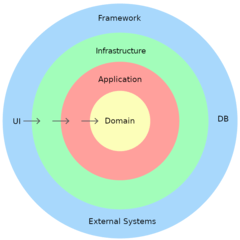Introduction to SOLID principles
In software development, crafting code that is easy to understand, maintain, and extend is a high priority. One of the most effective ways to achieve this is by following the SOLID principles, a set of five design principles intended to improve the robustness and quality of object-oriented code. These principles, introduced by Robert C. Martin, are essential for developers aiming to produce clean and efficient code.
Breaking Down the SOLID Principles
Let's explore each of the five SOLID principles, detailing their significance in software design and providing practical examples to illustrate their application in real-world programming scenarios.
Single Responsibility Principle (SRP)
This principle states that a class should have only one reason to change, meaning it should only have one job or responsibility. For example, consider a User class that handles user data and also manages file storage. This violates SRP because the class has more than one responsibility. Instead, you could create a User class for handling user data and a separate UserFileManager class for managing file storage. This way, each class has a single responsibility, making the code easier to maintain and modify.
Open/Closed Principle (OCP)
According to OCP, software entities like classes, modules, and functions should be open for extension but closed for modification. For instance, if you have a Shape class with a method calculateArea(), and you want to add new shapes (like Circle or Square), modifying the Shape class each time is a bad idea. Instead, you can use polymorphism. Define an abstract class Shape with an abstract method calculateArea(), and then create subclasses Circle and Square that implement this method. This approach allows you to add new shapes without changing the existing code.
Liskov Substitution Principle (LSP)
The Liskov Substitution Principle emphasizes that objects of a superclass should be replaceable with objects of a subclass without affecting the correctness of the program. For example, if you have a class Bird with a method fly(), and a subclass Penguin, which cannot fly, this violates LSP. Instead, you should redesign the hierarchy. You could have a Bird class without the fly() method and create a FlyingBird subclass with the fly() method. Penguin would then extend Bird, and Eagle would extend FlyingBird. This way, substituting Eagle for Bird won’t cause issues.
Interface Segregation Principle (ISP)
ISP advises that no client should be forced to depend on methods it does not use. Imagine you have an interface Worker with methods work() and eat(). If a class Robot implements Worker, it would be forced to implement eat(), which doesn't make sense for a robot. Instead, you should split Worker into two interfaces: Workable with the work() method and Eatable with the eat() method. Now, Robot can implement Workable, and a class Human can implement both Workable and Eatable.
Dependency Inversion Principle (DIP)
The Dependency Inversion Principle suggests that high-level modules should not depend on low-level modules. Both should depend on abstractions. For instance, if a NotificationService class directly depends on a EmailSender class, it violates DIP. Instead, you can introduce an interface MessageSender with a method sendMessage(), which EmailSender implements. NotificationService then depends on MessageSender, not EmailSender. This way, you can easily switch to a SmsSender without changing NotificationService.
Conclusion
Incorporating SOLID principles into your programming practices can significantly enhance the quality of your code. These principles provide a clear framework for writing more maintainable, understandable, and flexible software. By following them, developers can create systems that are not only robust but also easier to adapt and scale over time. Adopting these principles can lead to more efficient development processes and ultimately result in more reliable and successful software projects.




0 Comments